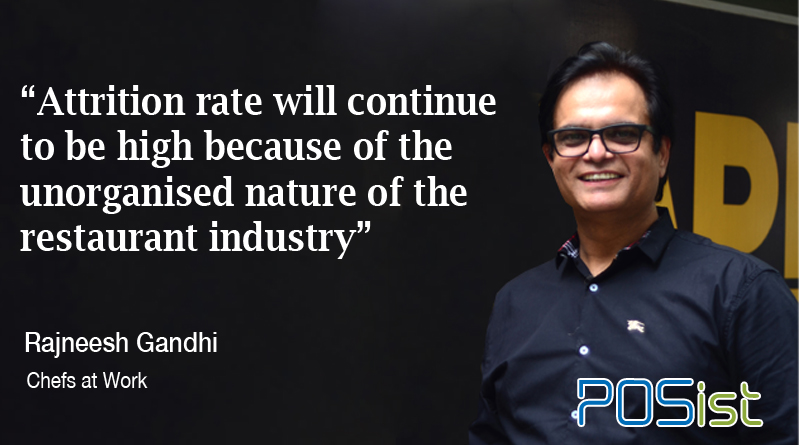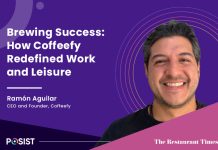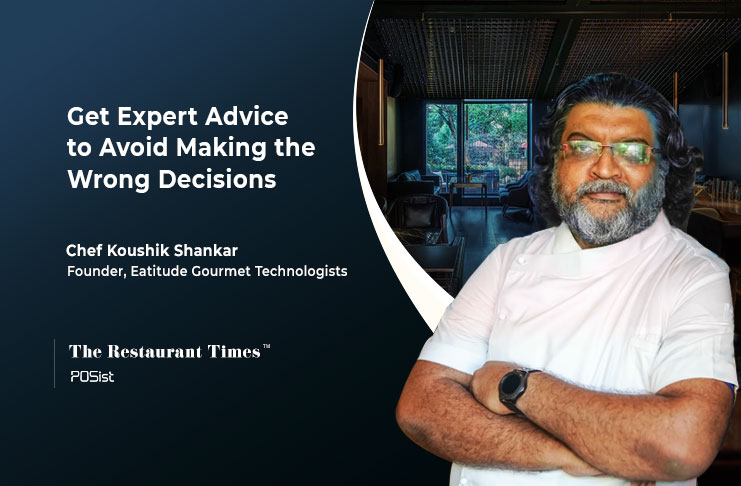With more than 30 years of experience in the hospitality industry, Rajneesh Gandhi has worked with many big brands as a Chef. After working for two years at a five-star hotel, he realized there was a lot of scope in consulting for backend operations in the restaurant industry. Until then most of the restaurants were only getting basic services like Interior Designing but there was hardly anyone who helped in developing the kitchen and the menu. Rajneesh works as a consultant and is also credited for opening a popular brand Pappu Chaiwalla.
Rajneesh Gandhi Talks About What It Takes to Run a Profitable Restaurant Business
Rajneesh has built a lot of new concepts such as Vegetarian Barbeques, Parantha format stores, Cutlet and Pakoda House among many others. We recently interacted with the Kitchen Mastermind to get his insights on the menu, pricing, and food cost, and what it takes to run a successful restaurant. Edited Excerpts…
Posist: Being a restaurant consultant, what kind of help do you offer to restaurant owners?
Rajneesh Gandhi: Basically, we do everything around the kitchen. First, we listen to the client and their requirements to understand their thought process and come up with ideas. Then we incorporate them and give them the shape of the menu. If they have already selected the location, we start working on the kitchen designing process. For example – when we do the kitchen for continental food which serves burgers and pasta we know what kind of equipment is required to prepare this type of cuisine. Later, we define the menu items and name them as per the concept of the restaurant.
After the kitchen and menu designing, we start working towards the recipes, costing and selling price of the menu items. Depending upon the interiors and the kind of outlet, we select the chinaware and glassware. We basically choose from the new trends in the market. In the last stage, before a few days of the restaurant opening, one of our team members conducts training of the staff on various aspects.
Posist: How did you come with the concept of Pappu Chaiwalla?
Rajneesh Gandhi: Pappu Chaiwalla has been a surprising journey for me. As a chef, I never wanted to start a cafe as I already knew the challenges in running a food business. But my team and some of the clients always nudged me to start my own brand. I opened Pappu Chaiwalla one and a half years ago.
At my office in HSR layout, in the small garden area, we designed the concept of Pappu Chaiwalla. Tea is our main focus. It has become a good name in HSR layout; from four tables now we have a seating capacity of 80 people. People have started liking it and it has clicked for us. Later, we decided to open a second outlet in GB Nagar in Bangalore. We also franchised one outlet in Kolkata and are coming up with the fourth outlet in Krishnagiri in Tamil Nadu.
Posist: What kind of advice do you give to restaurateurs who want to manage their outlets remotely?
Rajneesh Gandhi: There are two ways of managing anything: micro and macro management. Some restaurateurs want to sit at the outlet and monitor everything, right from buying or selling. There are people who love to micromanage. However, trusting your employees is extremely important. Both of my Pappu Chaiwalla outlets are managed by the managers. I have 100 percent trust in them. However, we sit daily to discuss the sales and challenges they faced.
Restaurateurs should have an overview of the restaurant, and that helps in controlling the food cost.
Posist: You have worked as Chef yourself and have been interacting with a lot of restaurant employees. What is the reason behind of high turnover rate of employees?
Rajneesh Gandhi: In the restaurant industry, attrition will keep on happening as it is one of the most unorganized sectors in the country. Here, there are two sets of people- the ones who are unskilled and uneducated, and the other set comes from the hotel management institutes.
The ones who are not educated, a pay increase of even Rs 500 is a big raise for them. They are usually drawn to new restaurants for launching their career. With the basic salary of Rs 6,000 – 7,000, they’d work for you for six-seven months, and then switch jobs for higher pay. While those who come from Hotel Management institutes don’t want to work in smaller restaurants, as they dream of working at five-star hotels.
As the open rate of restaurants and eateries are very high, employees have ample opportunity to move around.
Posist: What will be your advice on kitchen equipment?
Rajneesh Gandhi: I am a firm believer that if you are doing something new, buy everything new. In case, the budget is tight you can go for the second-hand equipment. However, every kitchen has different dimensions and it is not compulsory that second-hand equipment would fit everywhere. However, I feel picking up second-hand gas range, tables, sink is perfectly fine. I always tell people to keep away from the second-hand refrigeration as they have a very short shelf life and a new one has a warranty. So keeping a balance between old and new equipment is important if budget is less.
Posist: What are the key points to controlling food cost?
Rajneesh Gandhi: Food cost is basically the cost incurred for a dish. What should be the ideal cost of that dish? It should be 30 percent of the selling price. If it is less than that, then you have a perfect food cost. Few things cannot be controlled in food cost because of market trends and inflation. But it can be balanced with salads and soups with the right pricing to maintain the overall food cost.
Sometimes restaurateurs go overboard while deciding portions. They feel a 50 gm or 100 gm extra portion would not make a difference. However, they impact the overall food cost marginally.
Restaurant owners should work on individual recipes, whatever they are selling with actual costing. The chef should measure everything and cost it.
You should be aware of the exact cost and then sell it at the right price. If it costs you Rs 20, you should sell it for Rs 60. Selling it for even Rs 50 will lead to higher costs eventually. Also, one should only take out the cost of the raw materials as it is the variable cost, and later add the percentage of gas, labor, rental which is the fixed cost.
Posist: Which format is the best format to make profits?
Rajneesh Gandhi: What clicks nobody knows! When we built ‘Parantha Company’ which is a 40 km drive from Bangalore, we were expecting Rs 6-8 lakh of profits, which would be very good. But they crossed Rs 20-25 lakhs! Thus, it is very difficult to say which format will be successful.
If you are maintaining your quality, any model can work. While starting a new restaurant, people usually get the best chef and launch a great product line. Slowly, over time, when challenges creep in, they cut down on human resource, and try to control costs. They experiment. ‘Let’s change things to bring down the pricing’. It is not about the pricing, but about selling at the right price. Bringing the price down may pull the crowd, but the profits ultimately depend on the food cost. I think both of them should go hand in hand.
As told to The Restaurant Times by Posist

















